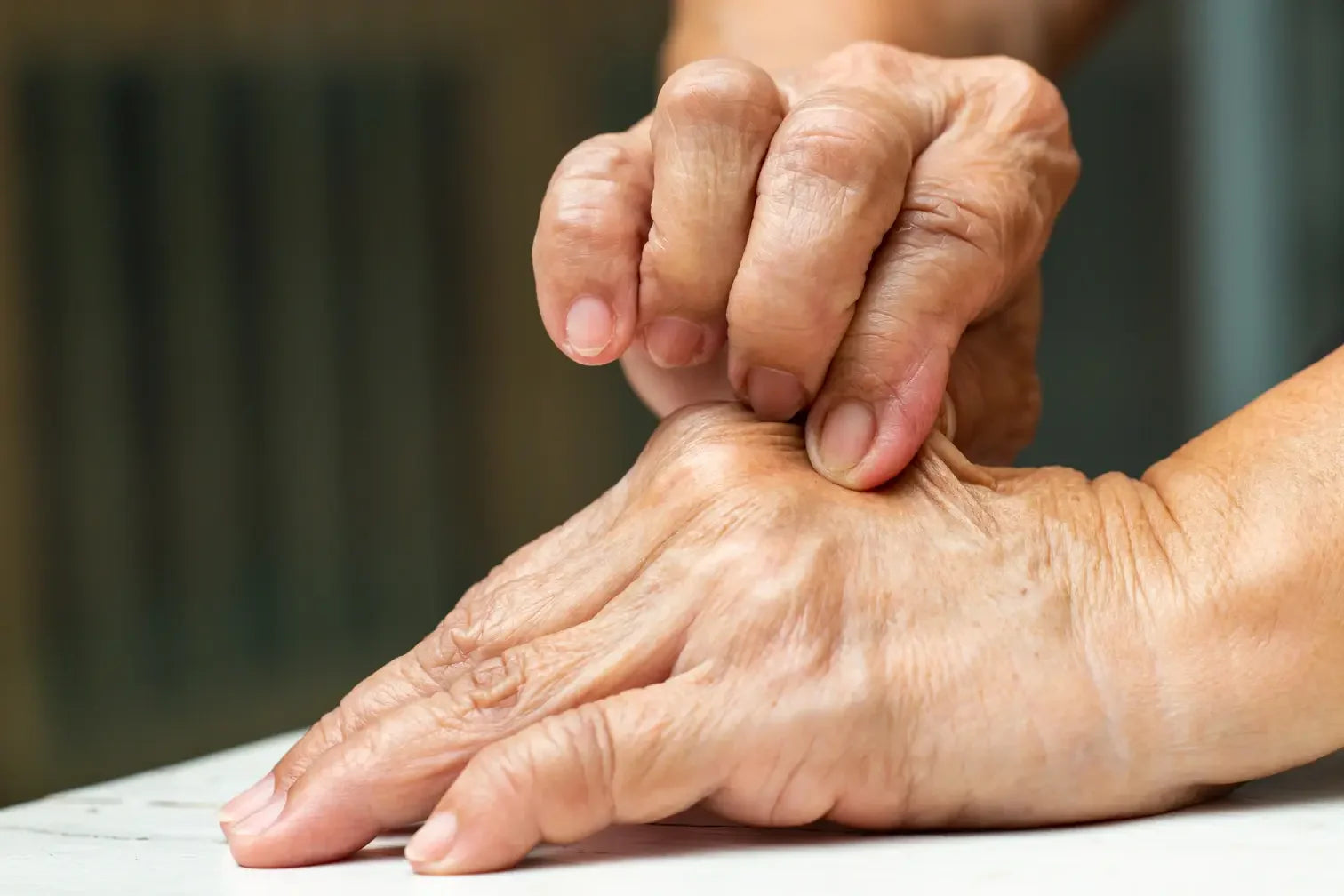Why Does Epidermal Thickness Matter?
Why Does Epidermal Thickness Matter?
How Does Epidermal Thickness Vary Across Skin?
How Does Epidermal Thickness Vary Across Skin?
What Does Epidermal Thickness Have To Do With Barrier Function?
What Does Epidermal Thickness Have To Do With Barrier Function?
How Does Epidermal Thickness Change with Age?
How Does Epidermal Thickness Change with Age?
What Factors Impact Epidermal Thickness?
What Factors Impact Epidermal Thickness?
Boost Epidermal Thickness with OneSkin
Boost Epidermal Thickness with OneSkin
How Does Epidermal Thickness Impact Skin’s Appearance?
How Does Epidermal Thickness Impact Skin’s Appearance?
- The epidermis is the outermost layer of our skin. It maintains overall hydration levels, produces new skin cells, and protects against pathogens and UV radiation.
- As we get older, the epidermis thins at a rate of 5-7% per decade.
- As the epidermis thins, it becomes more vulnerable to injury and shows signs of aging like wrinkles and sagging.
- In lab studies and clincial studies, OneSkin’s OS-01 BODY, OS-01 FACE, and OS-01 EYE were scientifically proven to promote a significant increase in epidermal thickness and/or boost barrier function, reversing this central sign of skin aging.
- The epidermis is the outermost layer of our skin. It maintains overall hydration levels, produces new skin cells, and protects against pathogens and UV radiation.
- As we get older, the epidermis thins at a rate of 5-7% per decade.
- As the epidermis thins, it becomes more vulnerable to injury and shows signs of aging like wrinkles and sagging.
- In lab studies and clincial studies, OneSkin’s OS-01 BODY, OS-01 FACE, and OS-01 EYE were scientifically proven to promote a significant increase in epidermal thickness and/or boost barrier function, reversing this central sign of skin aging.
- https://my.clevelandclinic.org/health/body/21901-epidermis
- https://pubmed.ncbi.nlm.nih.gov/14690333/
- https://pubmed.ncbi.nlm.nih.gov/2384222/
- https://www.nature.com/articles/s41514-021-00060-z%20
- https://alastin.com/blogs/intheglow/what-causes-thin-skin-and-how-to-treat-it
- https://www.nature.com/articles/s41514-023-00109-1
- https://onlinelibrary.wiley.com/doi/full/10.1111/jocd.16242
- Based on data from clinical studies and/or lab studies conducted on human skin samples, 3D skin models, and skin cells in the OneSkin lab. Explore more at oneskin.co/claims
- https://my.clevelandclinic.org/health/body/21901-epidermis
- https://pubmed.ncbi.nlm.nih.gov/14690333/
- https://pubmed.ncbi.nlm.nih.gov/2384222/
- https://www.nature.com/articles/s41514-021-00060-z%20
- https://alastin.com/blogs/intheglow/what-causes-thin-skin-and-how-to-treat-it
- https://www.nature.com/articles/s41514-023-00109-1
- https://onlinelibrary.wiley.com/doi/full/10.1111/jocd.16242
- Based on data from clinical studies and/or lab studies conducted on human skin samples, 3D skin models, and skin cells in the OneSkin lab. Explore more at oneskin.co/claims



